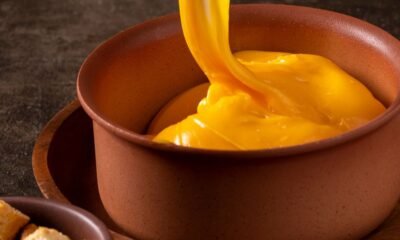BLOG
Calamarière: Whispers from the Depths

Calamarière: Whispers from the Depths
In the shadowy abyss of the ocean where sunlight fades and silence reigns, stories are etched in ink and told through undulating tentacles. Calamarière emerges from these watery depths as more than a concept; it is a whispered legacy of the sea—a convergence of mythology, marine ecology, artistic inspiration, and culinary finesse. This enigmatic idea captures the symbolic resonance of cephalopods in both artistic and gastronomic traditions, evoking an aesthetic rooted in deep-sea elegance and mysterious narratives.
The Mythological Ink of the Deep
Across ancient civilizations, the sea has long been a source of myth and marvel. In Greek lore, creatures like the Kraken and Scylla personify the terror and majesty of the ocean, their forms inspired by real-life cephalopods. Artists and storytellers alike drew upon the image of the squid as a metaphor for the unknown, a creature both beautiful and fearsome.
In many Mediterranean cultures, these beings were believed to be messengers of Poseidon, guardians of forgotten shipwrecks or the spirits of drowned sailors. The squid’s black ink, often seen as a defensive weapon, took on spiritual symbolism—a veil between worlds, a passage to transformation. Even today, these stories ripple through literature and cinema, reminding us of the enduring mystique of the sea and its inhabitants.
Artistic Reverberations of the Ocean
In the realm of fine art, the influence of marine life, especially squids and octopuses, has found expression in various forms. From sculpture and painting to textile and digital art, the swirling tentacles and ink-like textures of these creatures symbolize fluidity, adaptability, and the subconscious. Artists such as Hokusai subtly integrated wave patterns and aquatic motifs inspired by sea creatures into their woodblock prints, while contemporary creators often explore cephalopod anatomy to evoke themes of transformation and alien beauty.
Art installations inspired by deep-sea creatures often play with bioluminescence and organic movement, creating immersive experiences that echo the rhythm of underwater ecosystems. The use of ink as a medium—especially squid ink—evokes both fragility and permanence, capturing fleeting moments of inspiration as well as ancestral memory.
Culinary Poetry from the Sea
Moving from canvas to plate, the legacy of squid and its kin in global cuisine is rich and layered. Mediterranean coastal kitchens have long revered calamari, grilling or frying it with olive oil, lemon, and herbs harvested from sun-drenched hillsides. But beyond tradition, contemporary chefs are reimagining the use of cephalopods in haute cuisine.
Squid ink risotto, for example, is a dish as theatrical as it is flavorful—a visual homage to the sea’s dark elegance. Its jet-black hue and briny taste bring to life a sensory memory of ocean spray and midnight tides. In Japan, ika sashimi is served with reverence, highlighting the delicate texture and clean taste of raw squid. These preparations showcase not only technical skill but also an appreciation for the creature’s place in the marine ecosystem.
Beyond flavor, there is a growing awareness of sustainable seafood practices. As ocean ecosystems face unprecedented challenges, chefs are choosing responsibly sourced squid and octopus, aligning their menus with conservation values. This culinary approach honors both the tradition and future of marine gastronomy.
Fashion & Design: Tentacles as Texture
Beyond the plate and the gallery, Calamarière has also inspired a design language in fashion and architecture. Designers have drawn from the undulating movement of tentacles, the pearlescent textures of aquatic skin, and the otherworldly form of deep-sea creatures. Evening gowns that shimmer like fish scales, or fabrics that ripple like underwater currents, reflect an aesthetic born of the sea.
Marine-inspired jewelry features organic, flowing forms that mimic coral and squid limbs. In avant-garde fashion, the cephalopod has become a muse, symbolizing transformation, adaptability, and feminine mystique. Interior designers have echoed these themes with sea-inspired lighting installations and biomorphic furniture shaped like waves or shells, creating environments that evoke tranquility and connection to nature.
A Spiritual and Ecological Symbol
What makes the concept so enduring is its spiritual resonance. Cephalopods, with their intelligence, camouflage, and graceful propulsion, symbolize evolution and adaptability. In a world undergoing rapid change, these qualities speak deeply to the human experience. The sea itself has long been seen as a metaphor for the unconscious mind, and squid, with their ability to disappear into darkness, represent our own hidden depths and emotional currents.
Marine biologists studying these creatures have discovered astonishing behaviors—squid engage in color-coded communication, problem-solving, and even tool usage. This intelligence, coupled with their short life cycles and environmental sensitivity, makes them a symbol for both fragility and genius. Their stories, whether told in legend or research journals, echo with relevance.
The Sustainability Undercurrent
Calamarière also invites us to look beneath the aesthetic and gastronomic surface to confront pressing ecological concerns. The health of marine ecosystems is threatened by overfishing, climate change, and pollution. Cephalopods, which respond quickly to environmental shifts, are biological indicators of oceanic health.
Organizations and movements committed to sustainable seafood have highlighted squid as a relatively resilient species, but caution against complacency. Eco-certifications, marine protected areas, and traceable supply chains are now part of the dialogue. Artists and chefs aligned with this ethos incorporate educational elements into their work, transforming appreciation into activism.
FAQs
What does the term Calamarière mean?
While not a formal term, Calamarière encapsulates a creative and symbolic exploration of squid and deep-sea life through various disciplines like art, cuisine, design, and mythology.
Why is squid ink used in art and food?
Squid ink offers a rich, natural pigment used for both its visual impact in art and its savory, briny flavor in dishes like risotto or pasta. It also holds symbolic meaning as a veil or expression of mystery.
How is Calamarière related to sustainability?
As squid are sensitive to oceanic changes, they highlight the importance of marine conservation. Artists and chefs using squid themes often promote sustainable seafood practices and environmental awareness.
What is the cultural significance of cephalopods?
Cephalopods appear in global folklore, often symbolizing mystery, adaptability, and intelligence. From the Kraken in Nordic myths to sacred symbols in Mediterranean art, their presence is deeply rooted in human storytelling.
Is Calamarière just about squid?
Not exactly. It’s a broader exploration of deep-sea beauty and symbolism, often using squid as the central muse but extending to themes of ecology, mythology, design, and emotional depth.
Conclusion
In Calamarière: Whispers from the Depths, we find more than a marine motif—we uncover a layered narrative of beauty, mystery, intelligence, and survival. Whether swirling through ink-stained canvases, plated in a delicate dish, or dancing in a designer’s imagination, the essence of the deep sea continues to whisper to us. Through artistic vision, ecological stewardship, and mythic remembrance, Calamarière becomes not just an idea but a living homage
BLOG
Why Wollmatten Are the Best Choice for Eco Interiors

Wool mats have been used for centuries across cultures. In 2025, they’re experiencing a strong comeback thanks to their eco-friendly nature and luxurious feel. Unlike synthetic options, wollmatten provide warmth in winter, coolness in summer, and a touch of elegance that never goes out of style.
They’re not just mats. They’re living textiles—products that connect us to natural materials, craftsmanship, and a healthier indoor environment.
Wollteppiche vs. Wollmatten: What’s the Difference?
Many people confuse wollteppiche (wool carpets) with wollmatten. While both are made of wool, their uses differ:
- Wollteppiche: Larger, often covering entire rooms, more decorative.
- Wollmatten: Smaller, versatile, can be placed in specific spots (under tables, near beds, or as entryway mats).
Tip: If you’re looking for a full-room covering, choose a wool carpet. For flexible, easy-to-move comfort, wollmatten are the better option.
Naturmatten: Eco-Friendly Comfort
The demand for naturmatten has surged as more people prioritize sustainability. These mats are made from untreated wool, free from harsh chemicals. They’re ideal for families with children, pets, or anyone who values a toxin-free home.
- Hypoallergenic
- Biodegradable
- Breathable and moisture-regulating
If you’ve been searching for a healthier indoor climate, naturmatten might be your best choice.
Filzmatten vs. Wollmatten
Filz (felt) is another popular natural material. Filzmatten are dense, durable, and often used in DIY projects or insulation. While they’re excellent for crafting or industrial use, wollmatten are softer and better suited for living spaces.
A homeowner once shared online: “I switched from synthetic mats to a simple wool felt mat in my hallway, and even after a year, it still feels fresh and natural.”
Handgefertigte Wollmatten: Craftsmanship at Its Best
Mass-produced mats can’t compare to the charm of handgefertigte wollmatten. Each handmade piece carries unique patterns, textures, and small imperfections that make it special. Artisans often use traditional weaving or felting techniques, ensuring durability and authenticity.
Handmade mats are more than floor coverings—they’re works of art for your home.
Teppich aus Schurwolle: Why Pure Wool Matters
A teppich aus schurwolle (carpet made of virgin wool) is considered the gold standard. Schurwolle refers to wool shorn from a live sheep, making it softer, stronger, and more resilient than recycled wool.
Benefits:
- Naturally flame-retardant
- Self-cleaning properties
- Long-lasting quality
When investing in a wollmatte, always check if it’s made from schurwolle for maximum value.
Hochflor Wollmatten: Luxury Underfoot
For those who love sinking their feet into softness, hochflor wollmatten (high-pile wool mats) are unbeatable. They add a cozy, luxurious touch to bedrooms and living rooms.
Pros:
- Extra soft texture
- Elegant appearance
- Great sound insulation
Cons:
- Require more maintenance
- Not ideal for high-traffic areas
Still, if you’re designing a relaxation space, nothing beats the indulgence of a high-pile wool mat.
Nachhaltige Teppiche: Why Sustainability Matters in 2025
Sustainability is no longer a trend—it’s a lifestyle. Nachhaltige teppiche, especially made from wool, reduce carbon footprints while supporting ethical production. By choosing wollmatten, you’re not just buying a product; you’re making an eco-conscious decision.
Did you know? Wool is 100% renewable and biodegradable. Unlike synthetic mats, it doesn’t end up as microplastic pollution.
Wohntextilien aus Wolle: Beyond Floor Mats
Wohntextilien aus wolle go far beyond mats. From cushions and throws to curtains and wall hangings, wool textiles create a cohesive, warm atmosphere in any home. Pairing wollmatten with other wool-based items makes interiors look naturally stylish.
Schafwollmatten: Nature’s Own Comfort
Schafwollmatten are made from sheep’s wool and are particularly valued for their softness and durability. Many shepherding regions in Europe and beyond still produce them using traditional methods. These mats are a direct connection between nature and modern living.
Wärmedämmende Wollmatten: Function Meets Design
One of the hidden superpowers of wollmatten is insulation. Wärmedämmende wollmatten keep rooms warmer in winter and cooler in summer. They’re excellent for energy-conscious households looking to cut heating costs.
Imagine walking barefoot on a cold morning—wool mats create instant comfort and insulation beneath your feet.
Pros and Cons of Wollmatten
Pros:
- Natural and eco-friendly
- Hypoallergenic
- Long-lasting and durable
- Comfortable year-round
- Stylish and timeless
Cons:
- Higher initial cost than synthetics
- Require special cleaning methods
- Sensitive to moths without treatment
How to Care for Wollmatten
Maintaining wollmatten ensures they last for decades:
- Vacuum regularly with a low-suction setting.
- Spot clean with mild soap and cold water.
- Air them out to prevent moisture buildup.
- Use natural moth repellents like cedar wood.
Where to Use Wollmatten in Your Home
- Living Room: Under coffee tables for a cozy centerpiece.
- Bedroom: Beside the bed for warm morning comfort.
- Hallway: Durable wool mats for entryways.
- Kids’ Rooms: Soft, hypoallergenic play surfaces.
- Offices: Acoustic dampening for quiet workspaces.
Real-Life Example: A Cozy Upgrade
A young couple in Berlin shared their story online: “We replaced all synthetic rugs with handgefertigte wollmatten. Not only does our apartment feel warmer, but we also breathe easier knowing it’s a healthier choice for our baby.”
This real-world shift reflects a growing trend—choosing wool mats for both health and style.
FAQ’s
Yes. Wool is naturally hypoallergenic and resists dust mites, making it safer for allergy sufferers.
Use mild soap, cold water, and blot gently. Avoid hot water, which can shrink wool. Professional cleaning once a year is ideal.
They look stunning but require more upkeep. If you have shedding pets, choose low-pile options.
Absolutely. With proper care, wool mats can last 20–30 years, while synthetic mats often wear out within 5–10 years.
Final Thoughts
In 2025, wollmatten represent much more than floor coverings. They’re a conscious lifestyle choice, combining natural comfort, durability, and sustainability. Whether you choose handgefertigte wollmatten, hochflor designs, or simple schafwollmatten, you’re investing in timeless quality.
BLOG
Tesla Pi Phone: Everything We Know About the Rumored Smartphone

For months, speculation around the Tesla Pi phone has stirred excitement among tech enthusiasts, investors, and Tesla fans worldwide. While Tesla has not officially confirmed such a device, persistent leaks and concept designs have created buzz about what could be the most futuristic smartphone yet. With whispers of Starlink connectivity, solar charging, and deep integration into the Tesla ecosystem, many wonder whether this rumored handset could disrupt the dominance of Apple and Samsung in the mobile industry.
The Origins of the Tesla Phone Rumor
The idea of a Tesla smartphone first emerged from a combination of patent filings, design renders, and Elon Musk’s reputation for entering and transforming industries. Just as Tesla reshaped electric vehicles and SpaceX redefined space travel, enthusiasts believe the company might set its sights on mobile technology. Some analysts think the Pi phone could serve as a companion device for Tesla vehicles, much like how Apple products integrate seamlessly within their ecosystem.
At the heart of this speculation lies Musk’s vision of linking technologies across Tesla, SpaceX, and Neuralink. A phone that connects directly to satellites, controls electric vehicles, and possibly integrates with brain-computer interfaces would stand out in a crowded smartphone market.
Expected Specifications and Hardware Features
Although no official specifications exist, leaks and expert predictions suggest the Tesla phone could rival top flagships. Analysts expect it to feature a high-end processor such as a Snapdragon 8-series chip or even a custom Tesla-designed silicon. Paired with options of 12GB RAM and storage capacities ranging from 256GB to 1TB, the device would match or surpass leading models.
The display is rumored to be an AMOLED or OLED panel with high refresh rates for smooth navigation and gaming. Camera systems could focus on astrophotography, leveraging advanced sensors to capture night skies, in line with Musk’s interest in space exploration. If true, this would put it in competition with the low-light capabilities of devices like the iPhone Pro Max and Samsung Galaxy Ultra.
Durability is another key expectation. Many concept images show a sleek, minimalist design that echoes Tesla vehicles, possibly using aerospace-grade aluminum or ceramic materials for added strength.
Starlink Connectivity and Satellite Internet
One of the most talked-about features is potential Starlink integration. SpaceX has already deployed thousands of satellites to provide high-speed internet across the globe. A smartphone with direct satellite connectivity would eliminate dependence on traditional carriers, particularly in remote areas.
The challenge lies in antenna size and power consumption. Engineers note that fitting satellite hardware into a slim phone design would be complex. However, if Tesla manages to miniaturize the technology, the Pi could become the first widely available device to break free from cellular networks.
Solar Charging Possibilities
Another exciting rumor is the inclusion of solar charging panels. Given Tesla’s leadership in solar energy products, this aligns with the brand’s mission of sustainable technology. A smartphone capable of charging itself in sunlight could appeal to users who travel often or live in regions with unstable electricity.
That said, solar charging efficiency on small devices remains limited. While it may not fully replace wired or wireless fast charging, even partial solar support could set the Pi apart from competitors.
Neuralink and Brain-Computer Interface
Perhaps the boldest rumor is integration with Neuralink, Elon Musk’s neurotechnology company. While the idea of controlling a phone with brain signals sounds futuristic, current Neuralink projects are focused on medical applications like restoring mobility.
Still, enthusiasts imagine a future where wearable devices or implants connect seamlessly with a smartphone, enabling hands-free commands. Even if Neuralink compatibility does not appear in the first generation, its potential association adds to the mystique surrounding the Pi phone.
Operating System and Software
Speculation continues about whether Tesla would adopt Android as a base or create a proprietary operating system. A Tesla OS could unify the phone with Tesla vehicles, allowing direct control of car features, real-time diagnostics, and access to the Supercharger network. Integration with apps like Tesla Energy or autopilot settings would add unique value.
If based on Android, the phone would retain access to the Google Play ecosystem, giving users flexibility while incorporating Tesla-specific enhancements. Either way, software innovation will be crucial in defining its identity.
Price Expectations and Market Position
Rumored pricing for the Pi phone varies widely, from $800 to over $1,500 depending on configurations. If Tesla includes advanced features like Starlink connectivity and solar charging, it would likely compete in the ultra-premium category alongside Apple and Samsung flagships.
The brand’s strong identity and Elon Musk’s influence could drive demand even at high prices. Early adopters would likely see it not only as a smartphone but as part of a futuristic lifestyle brand.
Impact on the Smartphone Market
If Tesla releases a phone with genuine innovation, it could disrupt the duopoly of Apple and Samsung. Features like satellite internet and deep integration with electric vehicles would offer something neither competitor currently provides.
However, success depends on execution. Hardware partnerships, app ecosystem support, and manufacturing capacity all play a role. Tesla has proven it can scale production with cars, but the smartphone industry has its own challenges.
Skepticism and Challenges
Despite the excitement, many analysts remain cautious. They argue that smartphone rumors have circulated for years with little evidence of actual development. Without official confirmation, it is possible that the Pi remains a concept rather than a product in Tesla’s pipeline.
Technical hurdles—miniaturizing satellite hardware, improving solar efficiency, and ensuring battery longevity—are not easily solved. Moreover, regulatory approvals for satellite phones vary across countries, which could slow global adoption.
FAQs About the Tesla Pi Phone
Is the Tesla Pi phone real?
Currently, Tesla has not confirmed the existence of the Pi phone. Most information comes from rumors, leaks, and concept renders.
What features are rumored for the Pi phone?
Predicted features include satellite internet via Starlink, solar charging, advanced cameras, and integration with Tesla vehicles.
When will Tesla Pi be released?
No official release date has been announced. Analysts speculate it could appear in the next few years if Tesla pursues development.
How much will the Pi phone cost?
Estimates range from $800 to $1,500 depending on features and storage capacity.
Will it compete with iPhone and Samsung Galaxy?
If the rumors prove true, Tesla’s phone would directly compete with flagship devices, but its unique ecosystem could make it stand out.
Does the Pi phone connect to Neuralink?
There is speculation about Neuralink compatibility, but such features are likely years away given current technology limitations.
Conclusion
The Tesla Pi phone remains one of the most intriguing rumors in technology. With talk of Starlink internet, solar charging, Neuralink integration, and seamless Tesla ecosystem support, it captures the imagination of tech fans worldwide. Yet, without official confirmation, it is important to separate fact from speculation.
Title Page Separator Site title
BLOG
What Is Architrave? Explained for Builders and Designers

If you’ve ever admired the polished look of a door, window, or interior wall, chances are you were looking at an architrave—even if you didn’t know the word. For homeowners and DIY enthusiasts, it’s often the finishing touch that transforms plain interiors into stylish ones. For designers, architects, and builders, architraves are a key part of achieving balance, proportion, and timeless detail in both classical and modern spaces.
So, what is architrave exactly, and why does it matter? This guide will explain the meaning, history, uses, and modern applications of architraves so you can understand their role in architecture and interior design.
Architrave Meaning: The Basics Explained
In simple terms, an architrave is a type of interior moulding used to frame doors, windows, or openings. Traditionally, it served both a decorative and functional purpose:
- Function: To hide the joint between the wall surface and the door or window frame.
- Aesthetic: To enhance the overall look with a decorative trim that adds depth and character.
In classical architecture, an architrave was the lowest part of the entablature in Greek and Roman temples, resting directly on columns. Today, the meaning has expanded to include door frame trim and window architrave used in homes and commercial buildings.
What Is an Architrave in Construction?
From a construction perspective, an architrave is a moulding around doors or windows that:
- Covers construction gaps.
- Protects the edges of frames from damage.
- Provides a neat, finished appearance.
Builders, joiners, and carpenters often install architraves alongside skirting boards and architraves to create design continuity around a room.
What Is Architrave in Interior Design?
In interior design, architraves are more than functional—they’re part of the room’s personality. They:
- Frame focal points like doors and windows.
- Complement skirting boards, wall panels, or ceiling cornices.
- Add subtle or bold decorative features, depending on style.
For instance, modern architrave designs often favor sleek, minimalist trims, while period homes may feature ornate, classical styles.
Difference Between Architrave and Skirting Board
Many homeowners confuse these two elements. Here’s a quick comparison:
| Feature | Architrave | Skirting Board |
|---|---|---|
| Location | Around doors and windows | Along the bottom of walls |
| Purpose | Frames openings, hides gaps | Protects walls from kicks/scuffs |
| Design Link | Matches door/window casing | Complements architraves |
What Materials Are Used for Architraves?
Architraves come in different materials depending on budget and style:
- MDF (Medium-Density Fibreboard): Affordable, smooth, and easy to paint.
- Softwood or Hardwood: Durable, natural look, can be stained or painted.
- PVC or Plastic: Low maintenance, ideal for bathrooms and kitchens.
MDF vs wood architrave: which is better? MDF is cost-effective and versatile, while solid wood offers durability and authenticity.
How to Fit an Architrave Around a Door
For DIY enthusiasts, fitting architraves can be straightforward with the right tools:
- Measure and cut mitred edges for neat corners.
- Attach with adhesive or small finishing nails.
- Fill gaps with caulk for a professional look.
- Sand and paint to match your interior.
This is why many consider architraves one of the cheapest architrave options for DIY projects that deliver a high impact.
Types of Architraves for Modern Homes
When choosing styles, consider the architecture of your property:
- Square Edge: Minimalist and contemporary.
- Ovolo: A rounded profile, perfect for traditional homes.
- Victorian or Edwardian Designs: Ornate details for period properties.
- Chamfered Edge: Subtle sloping design for versatile use.
The best architrave styles for period properties often replicate historical mouldings for authenticity.
What Is the Purpose of an Architrave?
To summarize, architraves serve three main purposes:
- Functional: Covering wall-to-frame gaps.
- Protective: Preventing frame edges from chipping.
- Decorative: Adding a finished, stylish look.
Without them, even the best door installation can look incomplete.
Architrave vs Door Casing: Are They the Same?
While often used interchangeably, there are slight differences:
- Architrave refers to the moulding trim around openings.
- Door casing often includes the structural framework plus decorative trim.
In most UK and design contexts, “architrave” is the common term.
History of Architrave in Architecture
The word architrave comes from Latin archi (chief) and trabs (beam). In classical architecture architrave, it formed the bottom beam of a temple’s entablature. Over time, the concept shifted indoors, evolving into today’s door casing and window architrave styles.
Can You Paint Over Architraves?
Yes—architraves are commonly painted to match doors or contrast walls. Professional decorators recommend:
- Sanding for smoothness.
- Using primer before applying color.
- Choosing semi-gloss or satin finishes for durability.
FAQ’s
What is an architrave and why is it used?
An architrave is decorative trim around doors or windows, used to hide joints and enhance design.
How wide should an architrave be?
Standard widths range from 44mm to 95mm, depending on property style.
Do you need an architrave around doors and windows?
While not structurally necessary, they give a finished, professional appearance.
What happens if you skip architraves?
Gaps remain visible, interiors look unfinished, and frame edges are more vulnerable.
Can you mix modern architraves with traditional skirting boards?
Yes, but it’s best to maintain visual balance to avoid design clashes.
What is included in an architrave set?
Usually three lengths: two verticals and one horizontal piece for a door frame.
Conclusion
Now that you know what is architrave, it’s clear that this simple feature makes a big difference in both construction and design. Whether you’re a homeowner renovating, a builder fitting frames, or a designer planning interiors, architraves add the finishing touch that ties a space together. From classical architecture architrave origins to modern architrave designs, they remain a small detail with big impact.
-

 BUSINESS2 months ago
BUSINESS2 months agomPaaS: Powerful Precision for Modern Measurement
-

 BLOG4 months ago
BLOG4 months agoToyota Sequoia Towing Power: What Can It Really Haul?
-

 BLOG4 months ago
BLOG4 months agoGolden Cream of Spain: A Heritage Rich in Taste and Tradition
-

 BLOG4 months ago
BLOG4 months agoFinding Home in China: A Journey Through Culture and Comfort
-

 BLOG4 months ago
BLOG4 months agoYE Tracker: Your Ultimate YouTube Earnings Companion
-

 EDUCATION3 months ago
EDUCATION3 months agoStolen Mail, Lost Checks, Hijacked Credit
-

 FASHION4 months ago
FASHION4 months agoParfum vs Cologne: What’s the Real Difference?
-

 BLOG3 months ago
BLOG3 months agoDJ On Board: Spinning Beats at Every Turn
